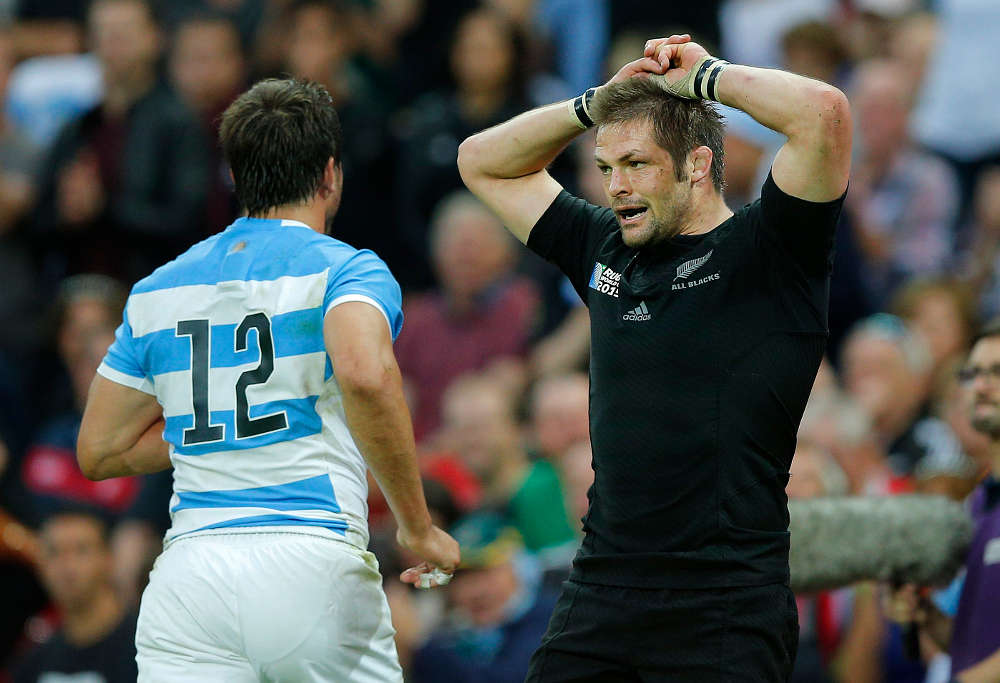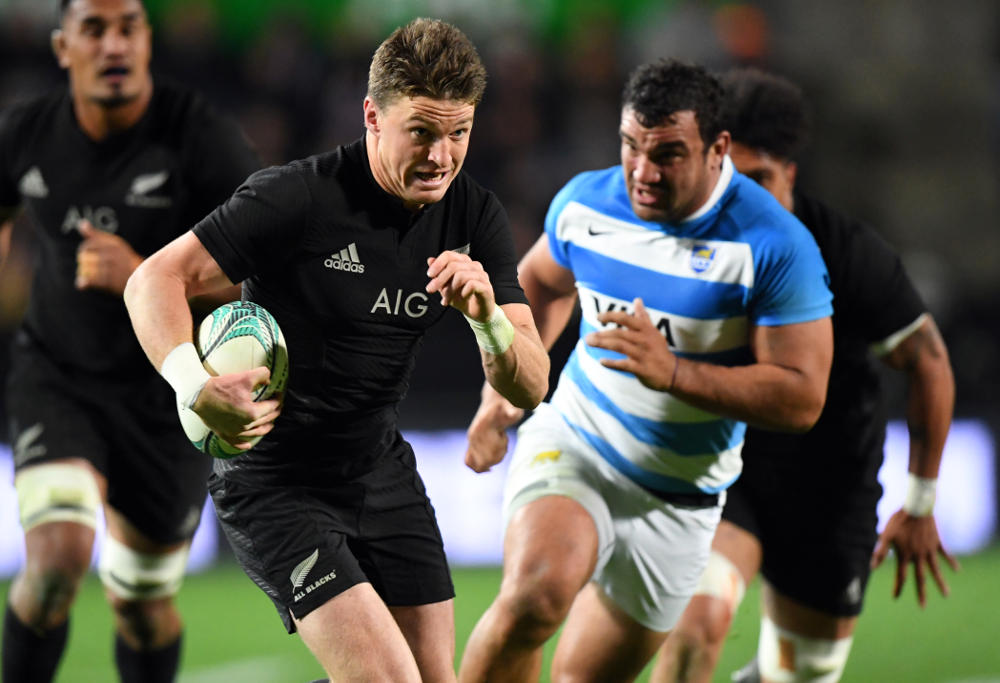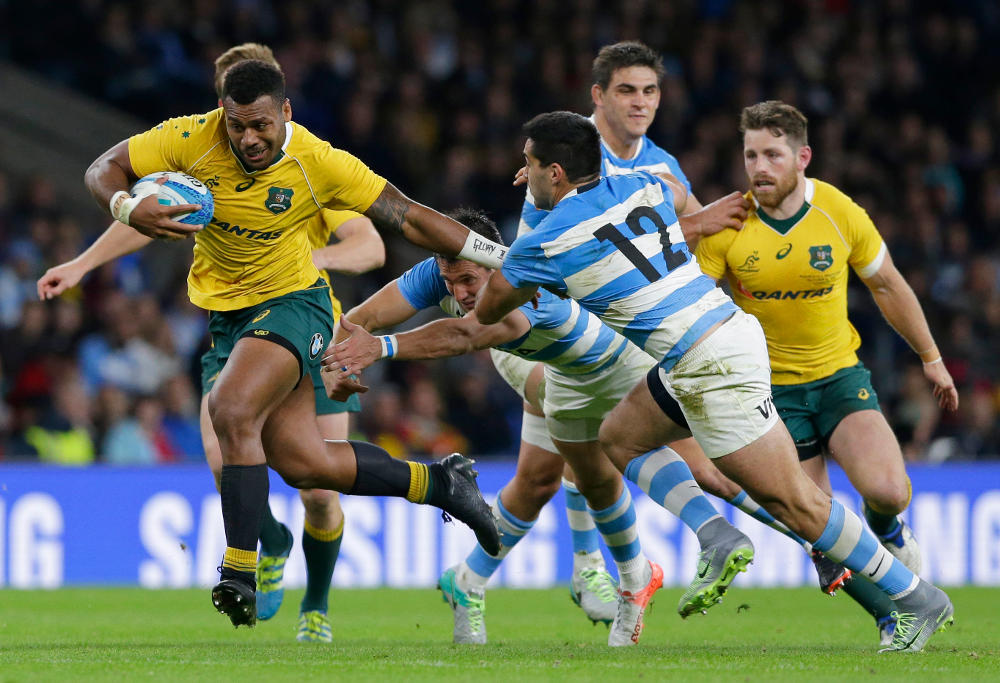Springboks forced to dig deep as Pumas fall just short of mighty upset
South Africa have managed to grind out victory in a "proper Test match", edging Argentina 22-21 in their final Rugby Championship fixture at Ellis…

As another year draws to a close, with the flow of the sands of time as unremitting as ever, it’s time to introspect.
Soon, we look forward to another year of hard hits, great tries, reset scrums, the Southern Kings, a spurt of trans-Tasman ‘love’ around mid-August, and Dean Mumm.
So let’s look back at the year that was for SANZAAR.
Argentina
Argentina had an overall disappointing year. After the promise of the Rugby World Cup fourth-placed finish, and the news that Super Rugby will finally be getting a Latin American flavour with the Jaguares (‘Tomás Cubelli-less Pumas’ just didn’t have the same ring to it), 2016 was supposed to be the year Argentina finally entrenched themselves as one of the veritable ‘Big Four’.
Alas, things went pear-shaped pretty early on.
The Jaguares were even being touted as having an outside chance to win Super Rugby by some in the lead-up to the season.
Having a squad filled with internationals who had come close to booking a place in the final of the Rugby World Cup would surely count for something, and having these guys stick together for an entire season was surely going to be beneficial for the Pumas as well. But Super Rugby is a tough nut to crack, and the Jaguares would have a baptism by fire in their first season.
After an exciting, come-from-behind victory over the Cheetahs in their debut, the Jaguares suffered a close, 8-13 defeat in Cape Town to the Stormers. Then came a pivotal moment in their season, the first home game in Buenos Aires, versus the Chiefs.

A massive crowd had flocked to Velez Sarsfield, and the anticipation was immense. The crowd was sent into a frenzy with a late try from Matías Moroni that seemed to be the clincher, but their hearts would be broken by a late Brad Weber try that won the game for the Waikato franchise.
From there on, the Jaguares’ fortunes never looked up, with a punishing tour of New Zealand followed by shock away defeats to fellow newcomers in the Sunwolves and the Kings. The absolute nadir of their season was the first half performance against the Lions C-team Johan Ackermann sent to Buenos Aires in that infamous gamble that some people think cost the Lions the title.
Still, in contrast to the views people espoused at the beginning of the year, people believed the Pumas would be a different beast to the Jaguares, and indeed the first two Tests of the season bore that out, as they comfortably beat Italy and France. But a few inklings of the year to come followed the next week as they were kept scoreless for the first time in nine years, losing 27-0 to the French.
Their Rugby Championship began with the annual home-and-away tie versus the Springboks, and while the meeting in the Republic had a real sense of déjà-vu to it, throwing away a lead in the final minutes, they managed to break the curse by beating the Springboks for the first time in Argentina the next week, winning the sort of match they have lost countless times in the past four years.
After the first bye weekend of the Rugby Championship came the away trip to New Zealand, and this would, in hindsight, represent the high-point – and low-point, of the Pumas’ season.
Every season the Pumas battle gamely against the All Blacks in the first leg of their trans-Tasman tour, but are ultimately outclassed. However, this season was slightly different.
Most pundits expected the Pumas to focus on the more eminently winnable match against the Wallabies, but they came out all guns blazing in Hamilton, taking the lead through Santiago Cordero, and giving the All Blacks the biggest Test they had received so far.
Unfortunately for the Pumas, this only served to poke the beast and in turn make it angrier. And boy, was the All Black response something to behold. Eight tries out of which five came in the second half, resulted in a 57-22 demolition.
I say this was a high-point because it was easily the best rugby they had played all year, but it was also a low-point because the amount of effort they put into that first 60 minutes was something they could not replicate again in 2016, and the humiliation of conceding 57 points despite playing the best rugby they had in a long time something they just could not recover from.

Their following Rugby Championship Tests followed a similar pattern – concede points in a flurry, play catch-up and ultimately fall short. Their two Tests against Australia went almost exactly like the World Cup semifinal in 2015, with the latter even being in the same venue.
In each of those matches, they conceded early tries, and in each of them they desperately tried to get back into the game by throwing caution, and the football, to the wind. Their best effort came at Twickenham in terms of actually getting close, but that too was not enough.
The Twickenham Test was the first of a globetrotting end to the year – in a season where they had already racked up enough Frequent Flyer points for a lifetime in Super Rugby alone, the Pumas spent the last few weeks of their season travelling from Argentina to Australia/New Zealand and back, then to London and back, then to Tokyo and finally to the United Kingdom.
All this flying could be better stomached if the team is winning, but during this country-hopping the Pumas only got one solitary win over Japan.
What followed the Japanese victory was a gruelling three-week tour of the UK. And each of these matches also followed a familiar template – play well enough to be in touch, but throw away the initiative through mind-boggling indiscipline.
Their first match against Wales was their prime opportunity to get a win. The Welsh performance against Australia the week prior was probably the worst of any nation in the November Internationals, but the Pumas just did not take the game to the Welshmen, allowing them to dictate the play and forcing the Pumas into defending for much of the game.
It’s a testament to the quality of their defence and the ineptitude of the Welsh attack that they stayed only 6-3 behind at half-time, but once Wales got ahead through Liam Williams’ try, Argentina were once more playing catch up, and although they always got back into the match through timely tries, they would once more fall short, losing 24-20.
Their penultimate game, against a buoyant Scotland, turned out to be a real bore, but even when Argentina finally managed to break the shackles with a try they were immediately pegged back by the Scots. Argentina threw the match away in the dying stages conceding a stupid penalty in front of the posts for Greig Laidlaw to easily win the game 19-16.
They would end their season with another trip to Twickenham to face Eddie Jones’ all-conquering (all except the All Blacks) England. And again, they could not impose themselves on a match which was theirs for the taking, especially after Elliott Daly’s early red card.
This match would devolve into a scrappy, card-ridden affair, but England quite clearly outclassed Argentina 27-14.
To summarise
Overall, the Pumas played 13 matches in 2016, winning just four of them – three of which came in their first five matches of the year. As Pablo Matera revealed to The Roar’s very own Nobrain back in September, the Pumas’ aim for the season was to win five games from the start of the Rugby Championship until the end of the year.
This would have meant two wins in the Rugby Championship and three on the end of year tour, reasonably speaking. However, they ultimately only managed to win one game in each, falling well short of their own objectives.
The positives
Before I get to the problems they face, I’d like to point out the positives from their year. Firstly, we can all agree that Argentina have now developed an attacking arsenal that allows them to score some outrageous tries.
With players like Santiago Cordero and Matías Moroni, their counter-attack is one of the best in the business, and looking at their Sevens and u-21s programmes, we can safely assume that they will continue to be well-endowed in attacking, exciting backs.
Another plus point from 2016 was the emergence of Facundo Isa as a lynchpin of the Argentinian pack. Isa was one of the standout performers in an underwhelming Jaguares side, and he transferred his good form from Super Rugby to the Test side as well, in fact getting even better in the blue and white of the Pumas.
He was leading the forwards for metres made in the Rugby Championship across all four nations, and contributed in the tight, loose, and on defence. He’s come a long way since his forgettable outing in Christchurch in 2015 against the All Blacks.

Negatives
Argentina have a lot to answer for in two departments: indiscipline, and stubbornness. Let’s go over each of these one by one.
Firstly, indiscipline. One of the features of the Argentinian season, be it under the guise of the Jaguares or the Pumas, was rampant indiscipline. Now indiscipline could mean in terms of conceding penalties, making errors and erroneous decisions, or simply losing the plot and resorting to thuggery.
Argentina ‘excelled’ in all three aspects. They were constantly on the wrong side of the referees, as both of our Argentinian Roarers have noted before – Agustín Creevy, for all his prowess as a player, just cannot put forth his view to the refs.
Now, whether that is due to his lack of skills with the English language, or simply because he does not have the personality to do so, is up for debate. What matters is that Argentina were almost always on the wrong side of the penalty count.
Many of those penalties were easily avoidable though, for example the one conceded in the 80th minute against Scotland. Juan Manuel Leguizamon, despite all his years of experience, just threw himself at the knees of the Scottish forwards right in front of the referee. Clear penalty, match lost.
Brain-fades like these cost them vital territory, points, and in this case the match. In all three Tests of their British tour, Juan Martín Hernández missed touch once per game from a penalty. Missing touch once in one game is almost inexcusable – doing so three times in three games is a cardinal sin.
Argentina also had multiple players carded this season – for myriad reasons, including foul play. Stamps, punches, bites, scuffles, tip tackles – they had them all in 2016. Things came to a boil in the Jaguares’ away defeat to the lowly Kings, a team they had beaten 73-27 in Argentina, as they had Tomás Lavanini and Ramiro Herrera red carded for committing the same offence, shoulder charging a ruck, and then towards the end had Tomás Lezana sin-binned for collapsing a maul.
The Jaguares finished with 12 men as the Kings scored three tries in the last ten minutes to win 29-22. I fail to understand what causes these rushes of blood to the head so many times for these players.
Who is to blame? Players like Lavanini have all the talent, and “mongrel”, in the world, but throw it away by spending more time suspended on the sidelines than on the pitch. Perhaps Carlos or Nobrain can throw some light on just why this issue seems to afflict Argentina.
Now let’s focus on more of a rugby aspect of their season – their gameplan. Mainly their stubbornness to stick to just one gameplan. Ever since they’ve joined the Rugby Championship, the Pumas have sought to change their style of play, and become more like a ‘Southern Hemisphere’ team – attack more often, and from deep, keep the ball alive, score tries, and the like.
And once they did achieve some proficiency in this way of playing, they made an error in judgment – they put all their eggs in this one offload-heavy basket, but it’s cost them in almost all other areas of the game.
For one, the skills required to develop an All Blacks-esque offloading game are not developed overnight, and when you still try to offload in every single tackle, you are bound to lose possession – just take a look at the “home” Test versus Australia this year.
Plus, a reluctance to use the kicking game of Nico Sánchez too much, relying mainly on Hernández’s much more varied kicking game when the veteran is available, makes Argentina too much of a one-trick pony. And as such, teams (at least the Southern Hemisphere ones) have figured out how to tackle the threat of the Pumas. Once they go behind early and are forced to chase the game, they will almost inevitably make more errors in their desperation.
Another point to note in Argentina’s season is that the travelling they’ve had to do is insane, but some of it could have been avoided. Yes, Super Rugby has expanded and so some teams will be worse off because of it, but even when you know that your players may be fatigued due to the incessant travel of a long season, why would you shoe-horn two Tests in England and Tokyo to add to the already travel-heavy schedule?
It was a bit bizarre from the UAR to say the least, and I hope the money they made from those two Tests will be used for the betterment of Argentinian rugby.
Player of the year
Argentina had some good performances from a few players, Agustín Creevy once again showed no signs of slowing down due to age, seemingly popping up in every ruck all year trying to turn over the ball.
His offloading skills are also easily the best in the whole team, despite being a hooker rather than a back. Martín Landajo also had the upper hand in his perennial competition with good friend Tomás Cubelli, providing the Pumas with an unpredictability off the base of the ruck that caused havoc among opposition defences, with his quick-tap penalties especially catching teams off guard, as the Wallabies and Wales can testify. And Santiago Cordero also backed up his 2015 performances with a solid year, scoring some great tries.
But the player of the year for Argentina without a doubt has to be Facundo Isa. After waxing lyrical about his performances in the positives section, surely I couldn’t give this to anyone else.
Isa will definitely be one of the players to watch in 2017, and opposition teams will have him out as a marked man, so it will be interesting to see how he lifts his game to meet the challenge.
Try of the year
Argentina score some beauties, don’t they? This try against England was their last of the season, scored by Santiago Cordero, and it was a ripper.
Performance of the year
Although the Pumas’ best rugby came in the first 60 minutes of the match against the All Blacks in Waikato, I really find it hard to award the year’s best performance a 57-22 reverse.
So I’ll give it to the match they played before that, a 26-24 victory over South Africa in Salta – their only win of this year’s Rugby Championship.
Looking ahead
There’s no denying that this year was a failure – one that promised much, but ultimately delivered precious little for Daniel Hourcade’s men. His record now stands at 17 wins from 43 Tests, which is only a slight improvement on predecessor Santiago Phelan, who won 13 out of 45.
If he has to improve his record, and indeed stay in charge at all, he’ll need to start winning more regularly next season, and for that he will need to let go of his stubbornness to play just one style of rugby, and ensure his players keep their composure.
A second season of Super Rugby will hopefully see the players acclimatise to life as a proper SANZAAR team, but there are many lessons to learn from 2016.
The verdict
The most beautiful rugby is winning rugby, and Argentina need to find that winning formula – staying disciplined will be a good start.
As with most articles that I get down to writing, this one has also ballooned out of proportion, so the SANZAAR year-in review will come to you in four parts. Next up, I’ll look back at the world champions and the record breaking year they had.